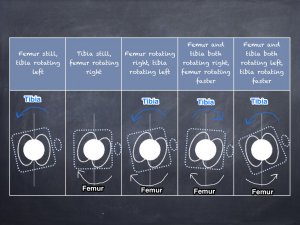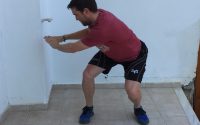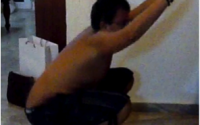5 Ways a Joint can Move
If there is one thing to learn on this blog that will help you assess and treat someone, it’s probably this. So simple, but SO important!! Learning that there are 5 ways a joint could move was as profound a thing as I’ve ever heard and something I hadn’t heard up to that point…and I was a 3rd year physio student at the time!
It was in the post last week, I talked about how to name a joint movement and how to work out how a joint is moving. In the post I talked about the 5 ways a joint can move. I had a few questions about what I meant and so I thought I’d jot down a quick post on that.
Now the key here is that we are not talking about flexion, extension, IR, ER, abduction, adduction as you’ll notice there are 6 of those. I am saying there is 5 ways of getting each of those…at every joint. So there are 5 ways of getting flexion at the knee, 5 ways of getting internal rotation, etc.
The key to this thinking is to forget about the joint (ironically), a joint is really just a space between bones…so to understand it, we need to think about what those bones are doing. A joint is what feels the motion, not what creates it.
What are the 5 ways a joint can move?
- Proximal bone still, distal moving
- Proximal bone still, distal moving
- Both bones moving in opposite directions
- Both bones moving in the same direction, proximal moving faster
- Both bones moving in the same direction, distal moving faster
The easiest ones to imagine are 1 and 2 where one of the bones is fixed and the other moves. However, in function you are much more likely to come across 3, 4 and 5, where both bones are moving.
So, lets take right knee internal rotation as our example and see what motions you need from the femur and tibia to create internal rotation in all 5 ways.
- Femur still, tibia rotating left
- Tibia still, femur rotating right
- Femur rotating right, tibia rotating left
- Femur and tibia both rotating right, femur moving faster
- Femur and tibia both rotating left, tibia moving faster
The best thing you can do is get a model of a knee and play around, creating these motions as it’s a lot easier to see that way. I’ve tried to do a diagram to explain it here:

I also did this little video to explain it about 5 years ago and never did anything with it…I’m really sorry about my boring voice!!
So, why is this so important? Well, the way I see it, it gives you far more assessment and treatment options. Also, it allows you to access a far greater understanding of how we move.
For example, if we stick with the knee, the knee moves through internal rotation both as a front foot in gait and as a back foot. However, the way the body achieves this is different. If we stick with talking about a right leg, as a front foot the both bones are rotating left, but the tibia is rotating faster (in my diagram thats the 5th option). However, as you move through gait and the right leg becomes the back leg, the knee achieves internal rotation by both bones rotating right, with the femur moving faster (option 4).
When starting to think about this, it’s best to try and keep it as simple as possible, 1 joint, 1 plane at a time. However, to understand something as complex as gait, you need to build that understanding as to what is happening at all the joints in all 3 planes….total geek fun if you are up for it 🙂
That’s some pretty heavy stuff, so if you have any questions, feel free to email me, leave a comment on the blog, or on the physioblogger facebook page.
Physioblogger


